TYPES OF PATTERNS
Patterns are classified according to the usage and forms of the pattern. The following factors are very useful for the selection of patterns.
✔Size and complexity of the shape
✔ Number of components to be produced
✔ Method of castings to be used.
The following types of patterns are normally used in foundry:
1. Solid or single piece pattern
2. Split pattern
3. Loose piece pattern
4. Match plate pattern
5. Sweep pattern
6. Skeleton pattern
7. Segmental pattern
8. Shall pattern
1. Solid Pattern or Single-Piece Pattern
These types of patterns are made of single solid piece without joints, partings or loose piece as shown in Figure 1.1. Therefore, it is called solid or one-piece pattern. It is made exactly into the desired casting to be produced with some allowances. It is used for making a few large size simple castings. The removal of pattern from the sand is easy.
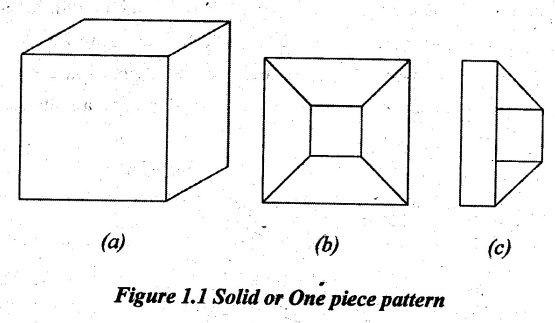
2. Split Pattern
A pattern which is having complex geometry cannot be removed from mould if they are made by a single-piece. Generally, split pattern is made into two parts as shown in Figure 1.2. One part is used to produce the lower half of the mould whereas the other part is used to produce the upper half of the mould. These two parts are assembled together in a correct position by pins called dowel pins. The line separating these two parts is called parting line. Sometimes, the split pattern is made into three parts as shown in Figure 1.3. If the split patterns are made of three pieces, then it is called three-piece pattern.
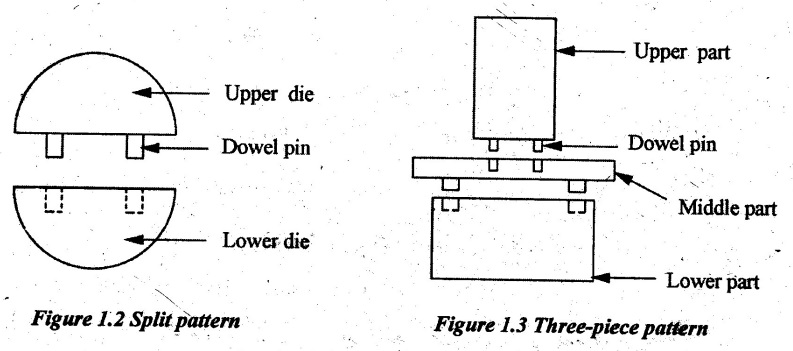
Split patterns are used for making symmetrical shaped castings such as spheres, cylinders, bearings and pulleys.
3. Loose-Piece Pattern
If a pattern is made from a single piece having projections or back drafts which lie above or below the parting plane, it is impossible to withdraw it from the mould. In such cases, the pattern is built up into solid pattern and loose pieces as shown in Figure 1.4. After making the mould, the solid pattern is first removed and then the loose pieces are removed without breaking the mould. This is called loose-piece pattern. Loose pieces are attached to the main body of the pattern by pins.
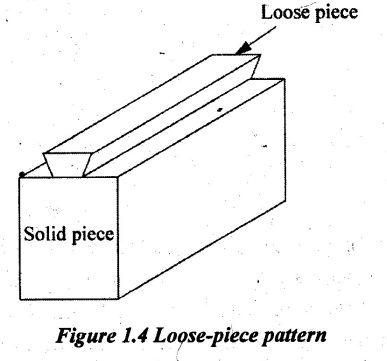
4. Match-Plate Pattern
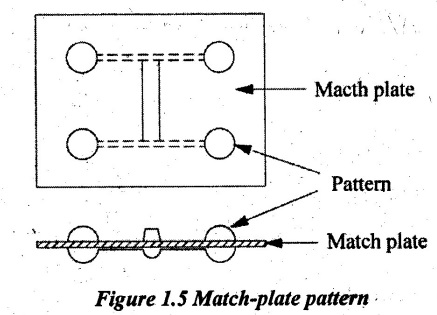
A pattern which is made into two halves mounted on both sides of a plate as shown in Figure 1.5 is called match-plate. The match plate is made by aluminium or wood. It is accurately placed between cope and drag flasks by means of locating pins. For small castings, many patterns can be mounted on the same match plate. The runner and gates required for sending the molten metal to the mould are attached in the match plate itself so that a small amount of hard work is required. Match plate patterns are used in machine moulding. This type of pattern is used for small, accurate size and large number of castings. Piston rings of I.C engine are produced by this process.
5. Sweep Pattern
Sweep patterns are mainly used to generate the surfaces of revolution such as cylinder, cone and sphere in large castings. Sweep is a section or board made of wood or metal to the required cross-section that is rotated about one edge / spindle having shapes of rotational symmetry to shape mould cavitie
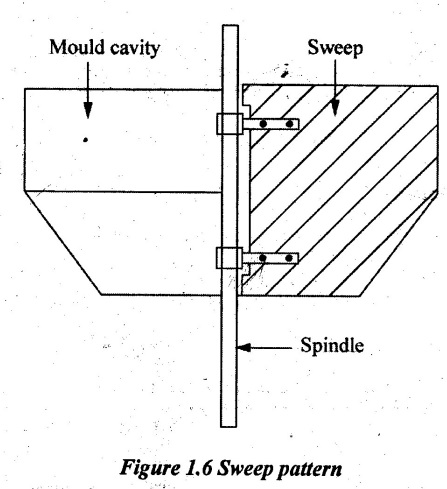
A half of the board is fitted at the center spindle as shown in Figure 1.6. The sand is approximately rammed around the mould cavity. The sweep is rotated to form the mould cavity in the sand. Sweep patterns are used for making large and circular castings in loam moulding.
6. Skeleton Pattern
For large casting of a simple shape, if a solid pattern is made of wood, it requires a large amount of wood. Hence, it is very expensive. In such cases, a skeleton pattern is used instead of a full pattern. A skeleton pattern is a ribbed frame of a desired casting. This shape is made of wooden strips with a lot of openings and fitted to end supports as shown in Figure 1.7.
First, the skeleton pattern is filled with loam sand. Ramming is done inside the openings in the pattern. A strickle board is used to remove excess sand and to give the correct shape. Moulds for water pipes, turbine castings and pipe bends are made by a skeleton pattern. For round shapes, the pattern is made into two halves which are joined together by means of screws.
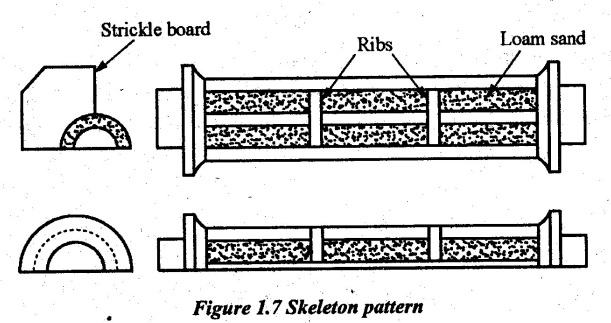
7. Segmental Pattern
A segmental pattern is a segment of whole pattern as shown in Figure 1.8. This pattern is also called part pattern.
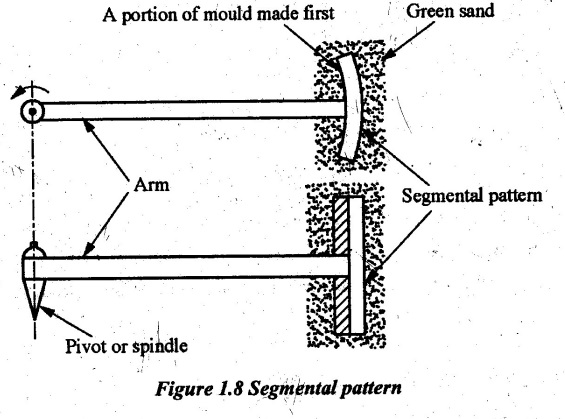
This pattern is used for forming circular moulds. When making the mould using this pattern, a vertical spindle is fixed at the center of the drag box. The bottom of the mould is ramme and leveled. Then, the pattern is attached to the spindle. Moulding sand is filled and rammed on the inner and outer sides of the pattern but not at the ends of a pattern. After ramming, the pattern is moved to form the next segment. Thus, the full mould is completed. This pattern is used for casting circular components such as rings, wheel rims, gear blanks etc.
8. Shell Pattern
Shell pattern is a hollow pattern. Its outer shape is used for making the mould. The core is prepared using the inner surface of the pattern itself. It is also known as block pattern.
These patterns are usually made of metal. The pattern is made into two halves and joined accurately by dowels. These patterns are mainly used for making drainage fittings and pipe work such as short bends as shown in Figure 1.9.
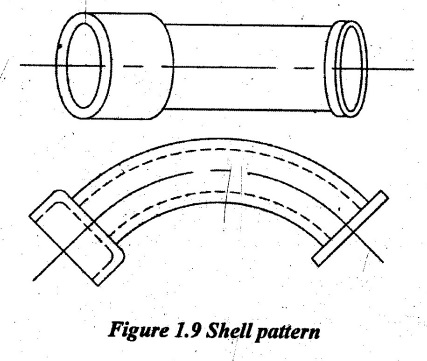
No comments:
Post a Comment